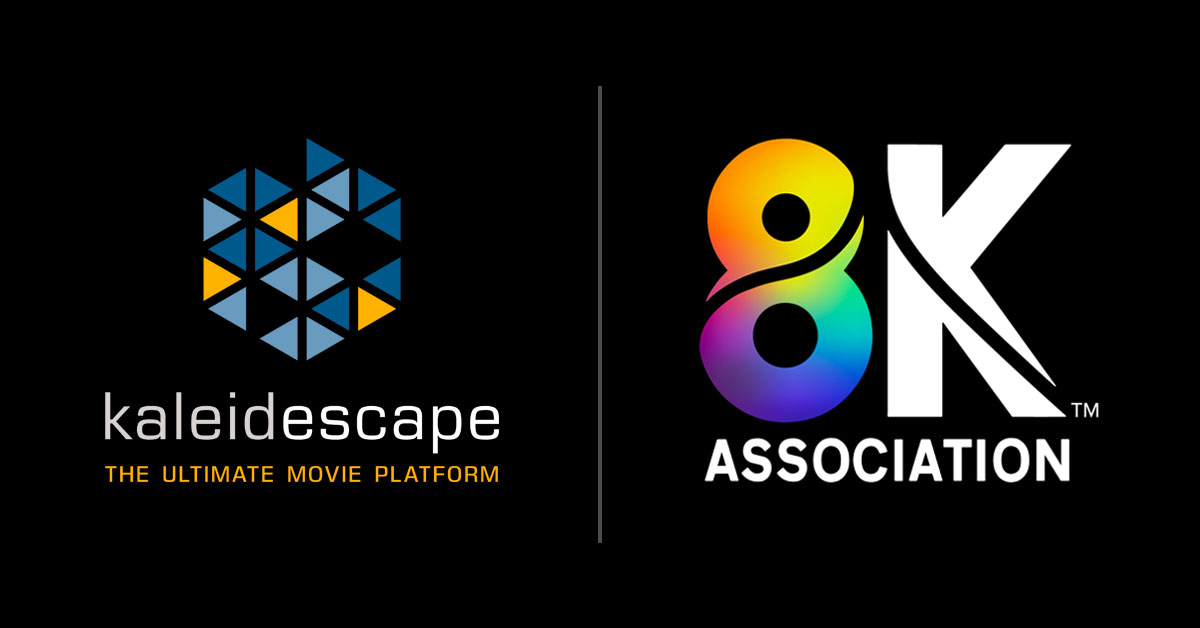Selecting the Right Antenna Technology for the U.S. Repack
MERIDEN, CONN.—North American broadcasters are reviewing all their equipment and operations in preparation for the spectrum repack. Selecting antenna technology may be one of the most important decisions they face, affecting everything from installation and maintenance costs, to their ability to meet switchover deadlines and perhaps most importantly, quality of service through the transition and well afterwards.
Approximately 90 percent of antennas currently installed in the U.S. market are narrowband “slotted pole” or pylon antennas, most of which will need to be replaced in order to make frequency changes when new channels are assigned.
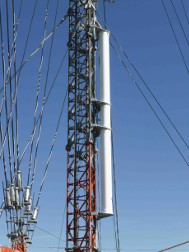
Sutro Tower, Broadband Slot Antenna
That’s because narrowband antennas are limited to single-channel operation. During manufacturing, slots are cut to exact dimensions prescribed by the operating channel. Once that is done, radiation characteristics and operating frequency are locked in, so reconfiguring radiation patterns or polarization ratios in the field is impossible.
Pylon antenna components and manufacturing specifications are also channel-dependent, so they can’t be ordered until the new channels are known. That makes it impossible to get ahead of the curve and execute a timely installation and transition. Switchover schedules will be strained by a known shortage of qualified installers—and as always, time is money—so early equipment purchases will help alleviate a host of ills. Plus, the FCC will reimburse broadcasters purchasing antennas before the auction, incentivizing early preparation.
GOING BROADBAND
Broadband antenna systems offer the flexibility to install early, ahead of the labor crunch, and make frequency changes later on when final channels are known. Designed to operate on any frequency in a given broadcast band, these frequency-agile antenna systems can be designed to allow reconfiguration of the radiation characteristics in the field after installation. Broadcasters located in international border regions can use this feature to optimize coverage and comply with interference protection constraints.
Broadband antennas using variable polarization technology (VPT) offer even greater advantages: they can be used by multiple broadcasters to share costly site infrastructure and significantly reduce operating costs.
There are three main types of broadband UHF antennas with the flexibility to accommodate the repack – broadband slot antenna (SBB), broadband pylon alternative antennas and broadband master panel (PEP) antennas. Each has its own set of pros and cons.
Broadband Slot Antenna—SBBs feature reduced wind load and fewer interconnections inside the antenna. They include antennas with wide cardioid, narrow cardioid and skull radiation pattern characteristics.
Because of wide bandwidth, low wind load, and good null fill performance, SBBs are ideal for temporary antenna use. At different times during the repack program, an SBBcould operate on the original channel, an interim channel, and the final channel, allowing flexibility in the sequence of upgrade events.
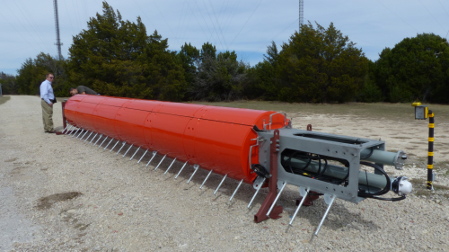
Low Wind Load, Broadband Pylon Antenna Photo credit: Jim Stenberg, American Tower
Broadband Pylon Alternative Antenna—Broadband pylon alternative antennas offer better performance compared to SBBs and less wind load than master panel antennas. They also provide flexible polarization configuration options including circular, elliptical, horizontal and vertical polarization. Upgrade capability for future MIMO or MISO operation is available. This antenna type is a good solution for a single station seeking the channel independence and flexibility of broadband or the ability to upgrade to EP, CP or MIMO transmission.
A broadband pylon alternative antenna could be shared by two full-power stations to reduce costs and tower loading. It could even be configured so that each station can independently define its own polarization ratio.
Broadband Master Panel Antennas—Broadband master panel antennas offer increased flexibility in attainable power ratings, radiation pattern configurations, redundancy, polarization options and future upgrade capability for MIMO or MISO.
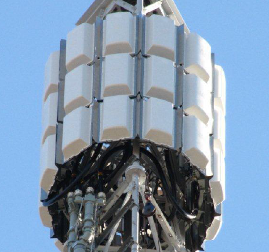
High Power Wrap-Around Antenna with Variable Polarization Technology
Master antennas are particularly appropriate for repack and digital switchover (DSO) programs in regions where weather can have a major impact on scheduling, as their installation requires minimal tower work. UHF and VHF master antenna systems with Variable Polarization are currently being installed at the top of One World Trade Center in Manhattan.
MULTIPLE SHARED SITES
Two separate sites can be used to attain very high redundancy, equipping each site with a broadband master antenna and a set of transmitters. This makes it possible to switch off an entire site for simplified upgrade or maintenance without compromising system performance. Major cities around the world have used this approach to simplify repack procedures.
On a smaller scale, two stations can share multiple sites if each station installs a low wind load SBB and a backup transmitter at the alternate station’s site.
ANTENNA POLARIZATION OPTIONS
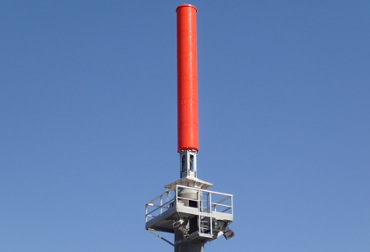
Broadband Cylinder Antenna with Variable Polarization Technology
VPT is important in the mobile broadcast market and for terrestrial broadcasters competing with satellite, cable and cellular networks. Both broadband pylon alternative antennas and broadband master antennas can be configured to permit future polarization ratio changes through simple modifications; and to allow independent polarization ratios for each channel when broadcasters share the antenna.
The same system can allow independent MIMO/MISO transmission. For example, one broadcaster could transmit horizontal polarization; another could transmit circular polarization, another elliptical polarization and another MIMO. This flexibility gives broadcasters at a shared site independent polarization control and the ability to independently upgrade to MIMO as future requirements dictate.
CONCLUSION
The spectrum auction and repack of frequencies offers an unparalleled opportunity to take advantage of new antenna technologies. By adopting variable polarization options, broadcasters can secure service to both fixed and mobile audiences. In choosing the most flexible antenna type, they can order antennas ahead of frequency allocation, install early, and satisfy loyal viewers with continued transmissions throughout the process.
Get the TV Tech Newsletter
The professional video industry's #1 source for news, trends and product and tech information. Sign up below.
